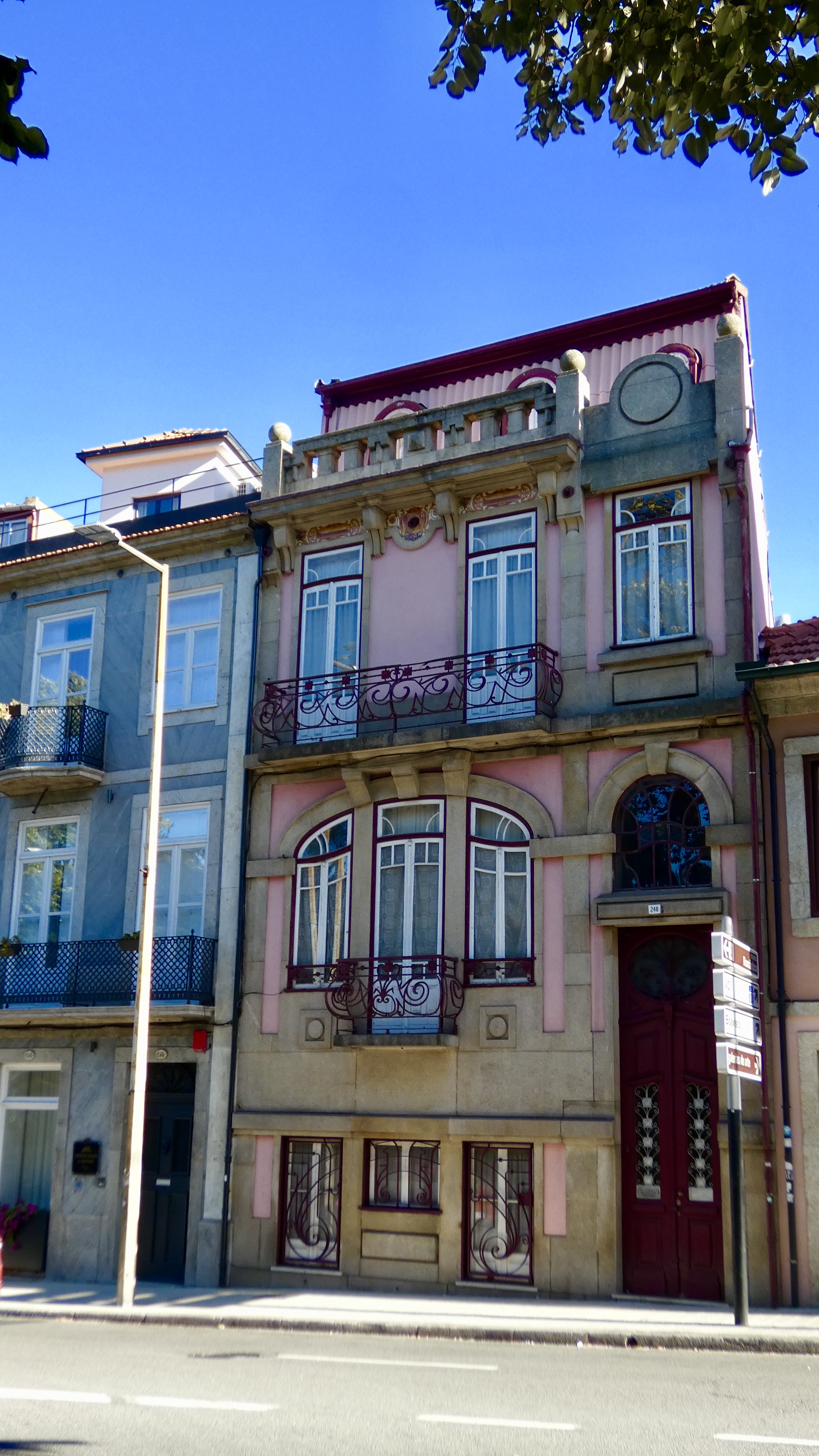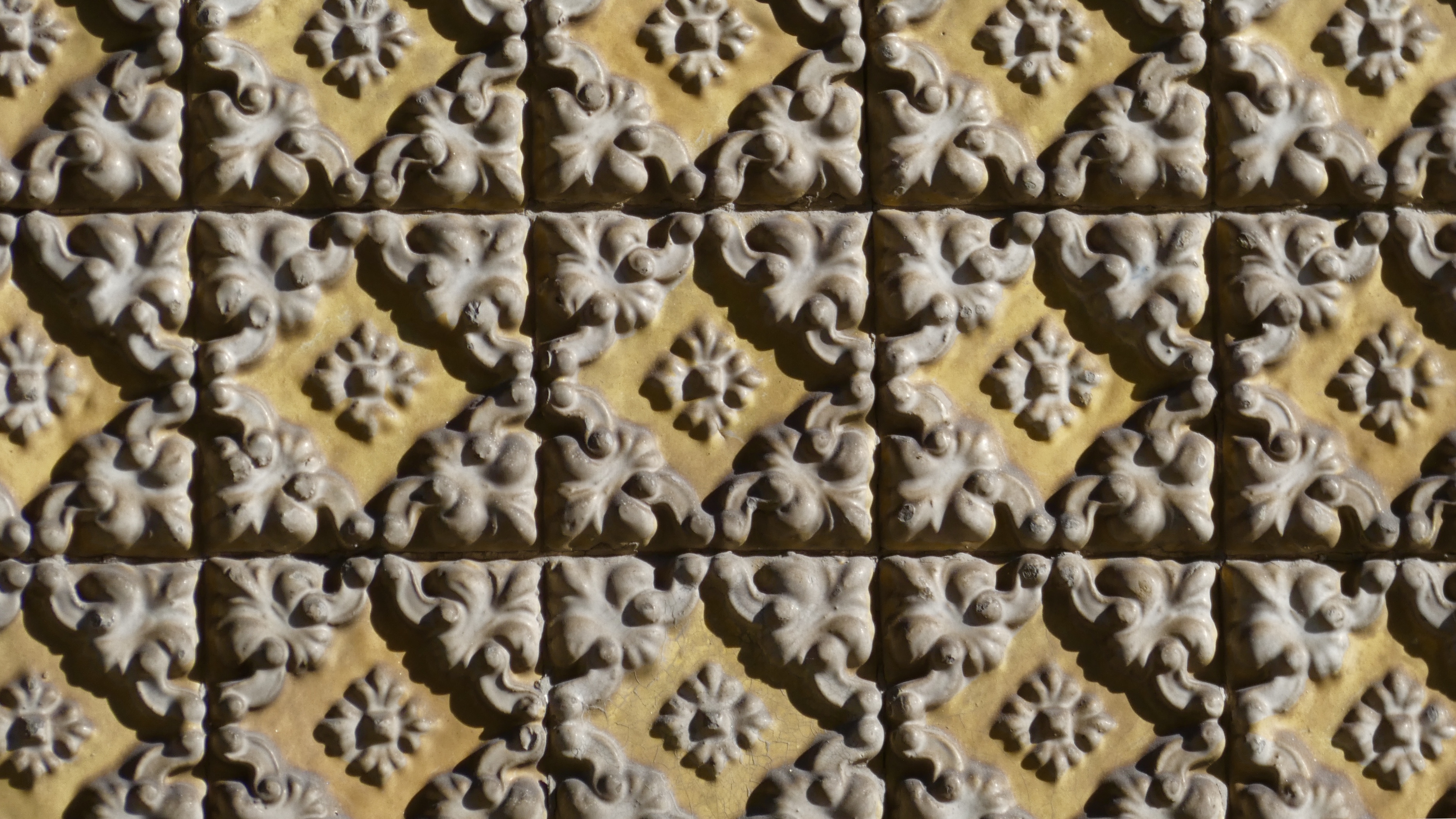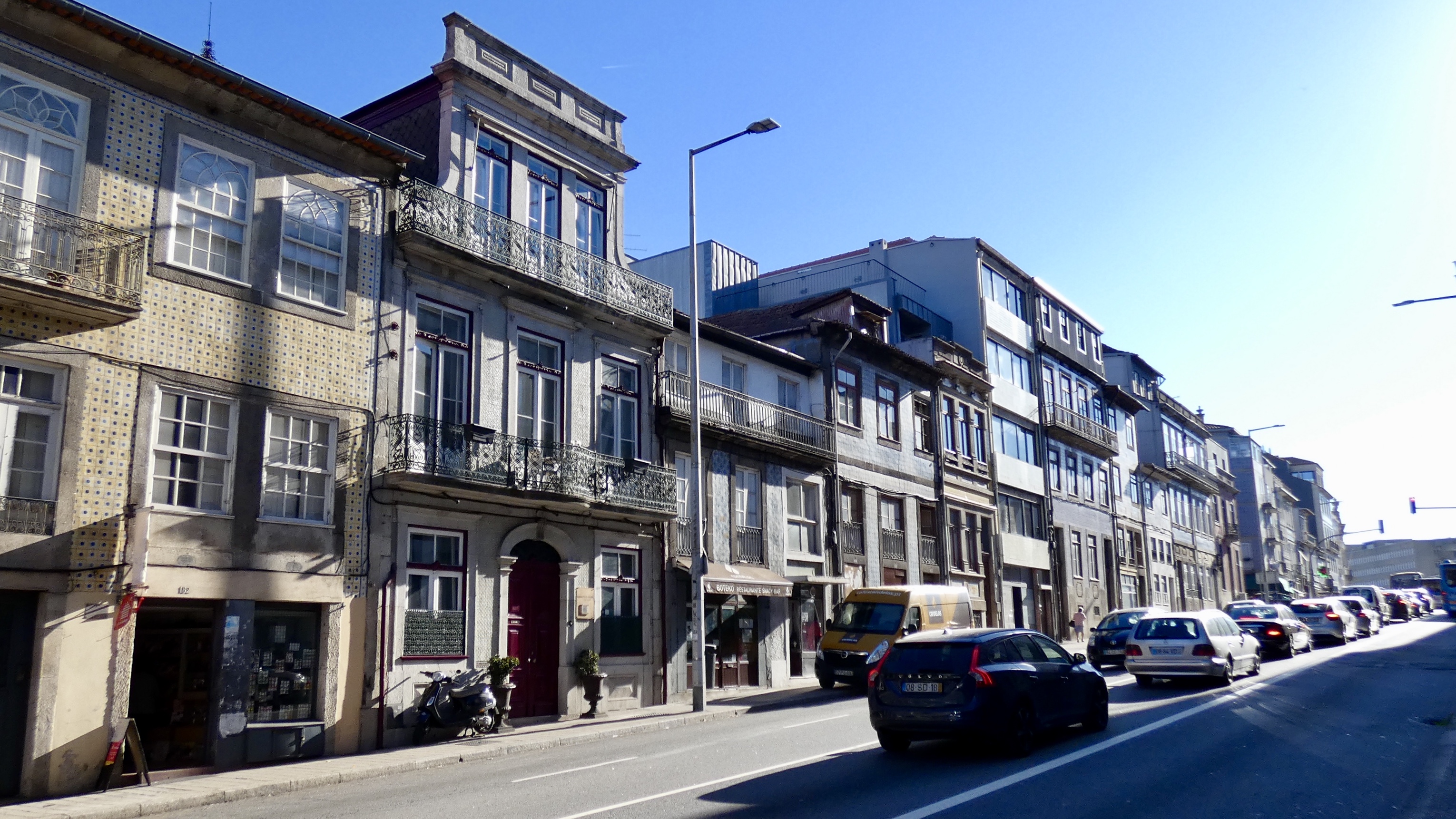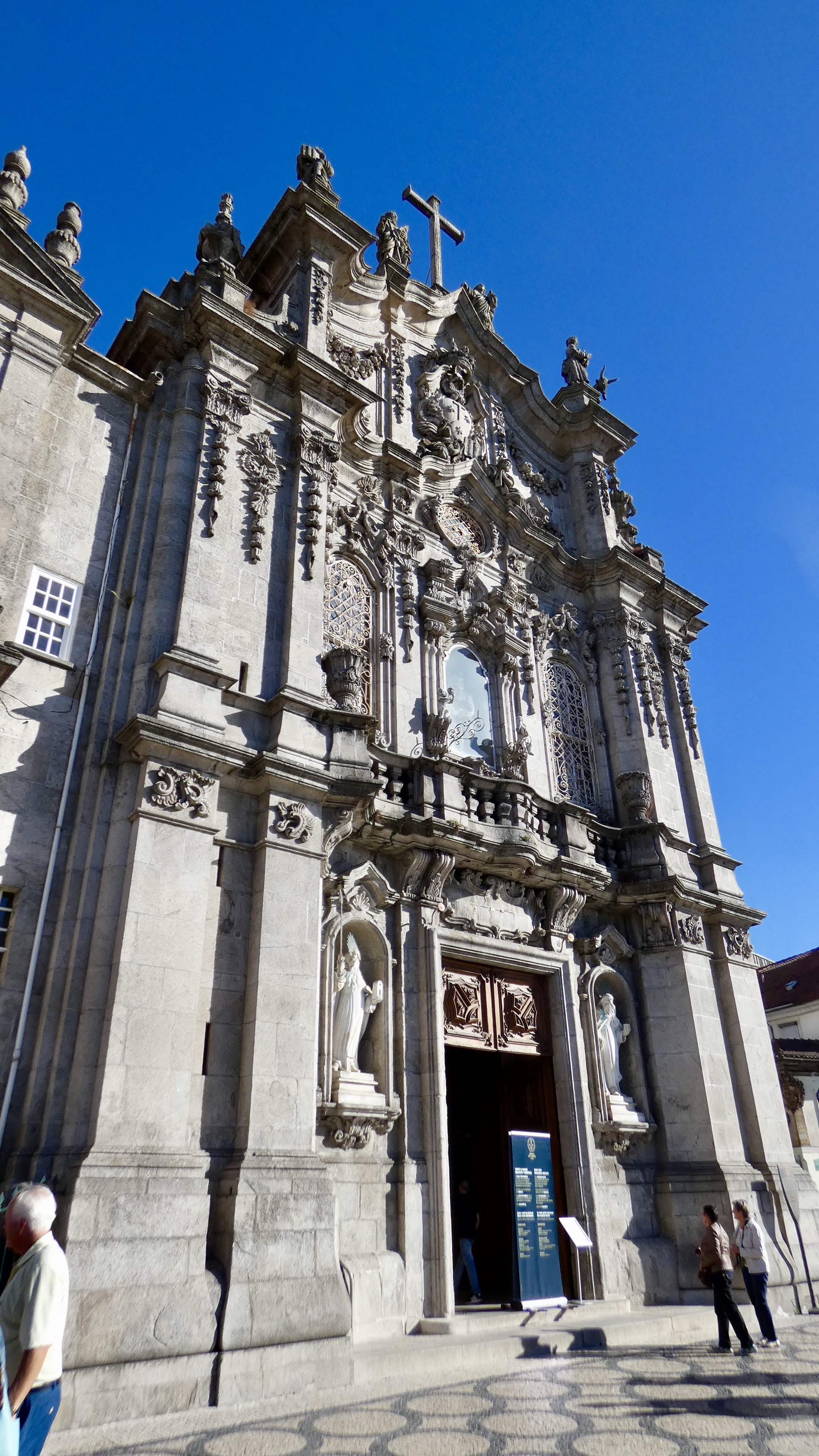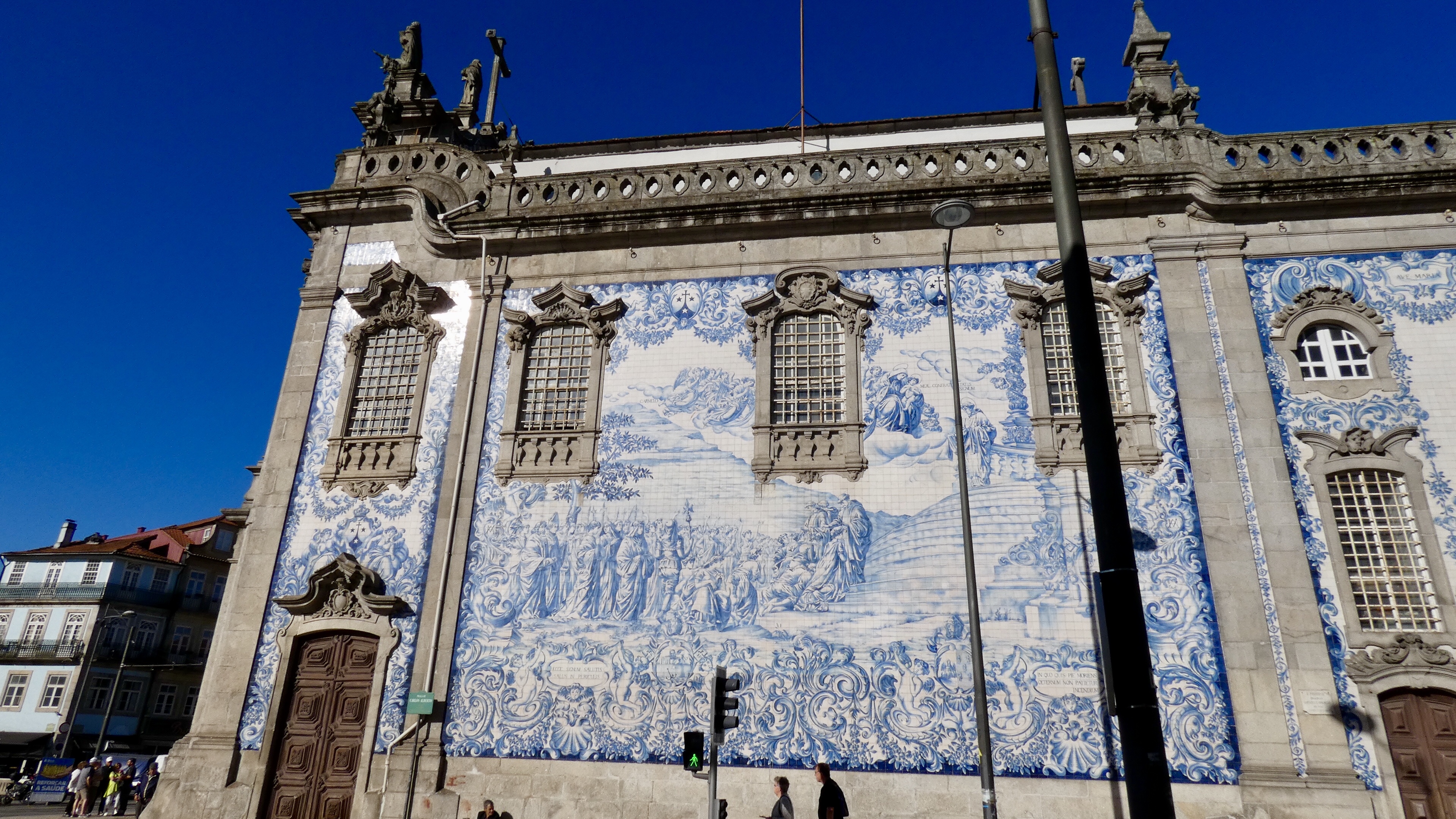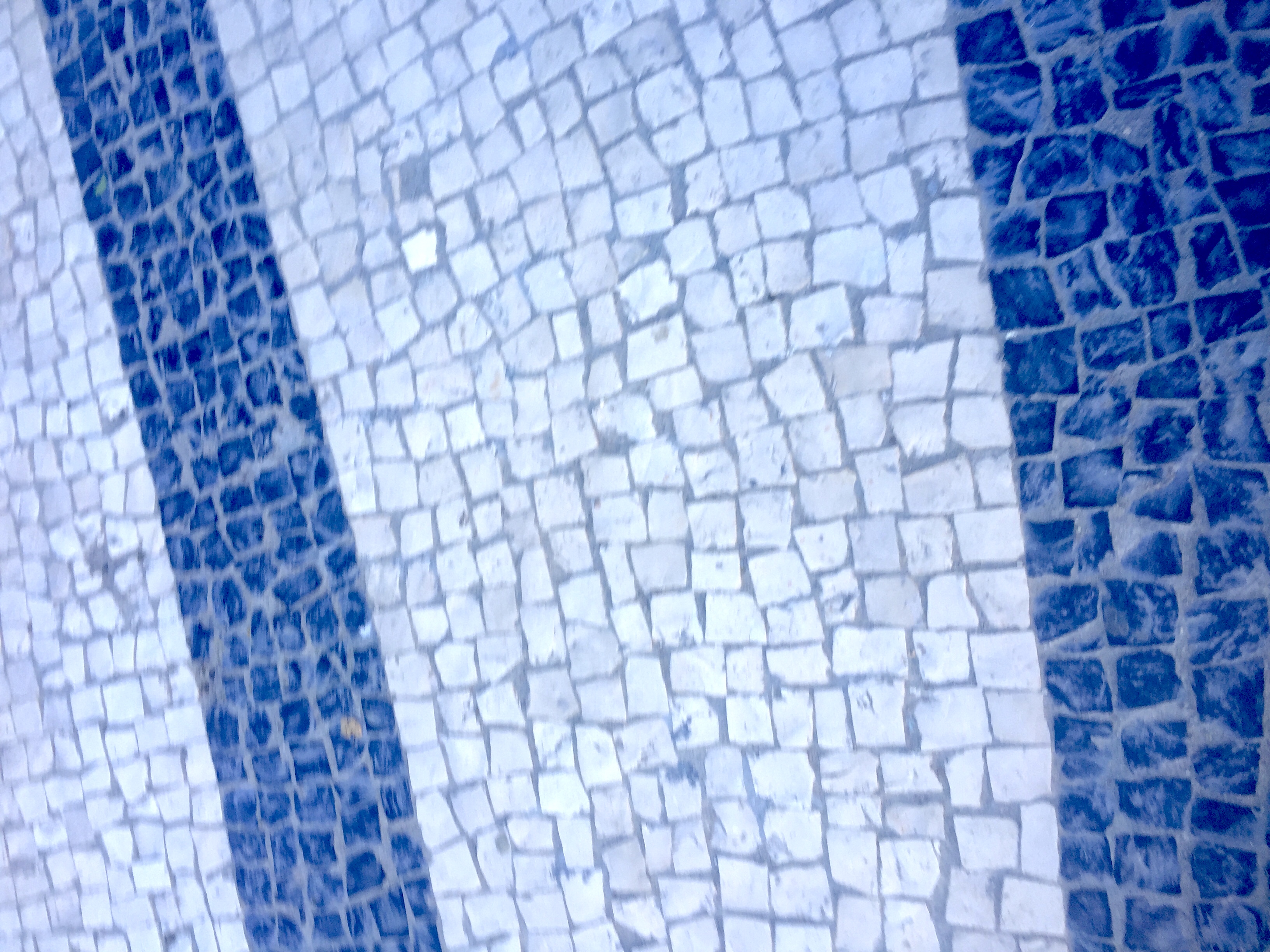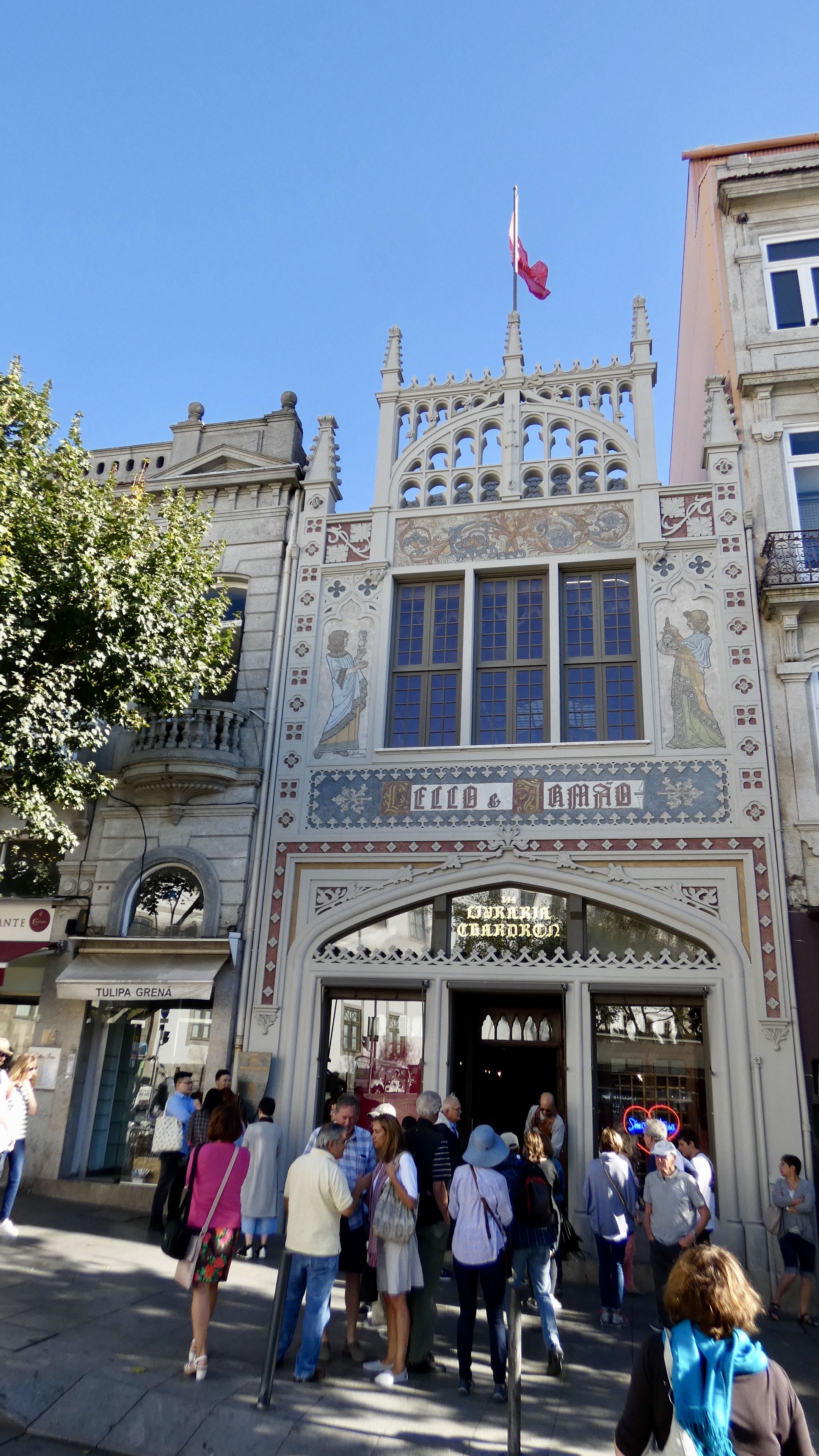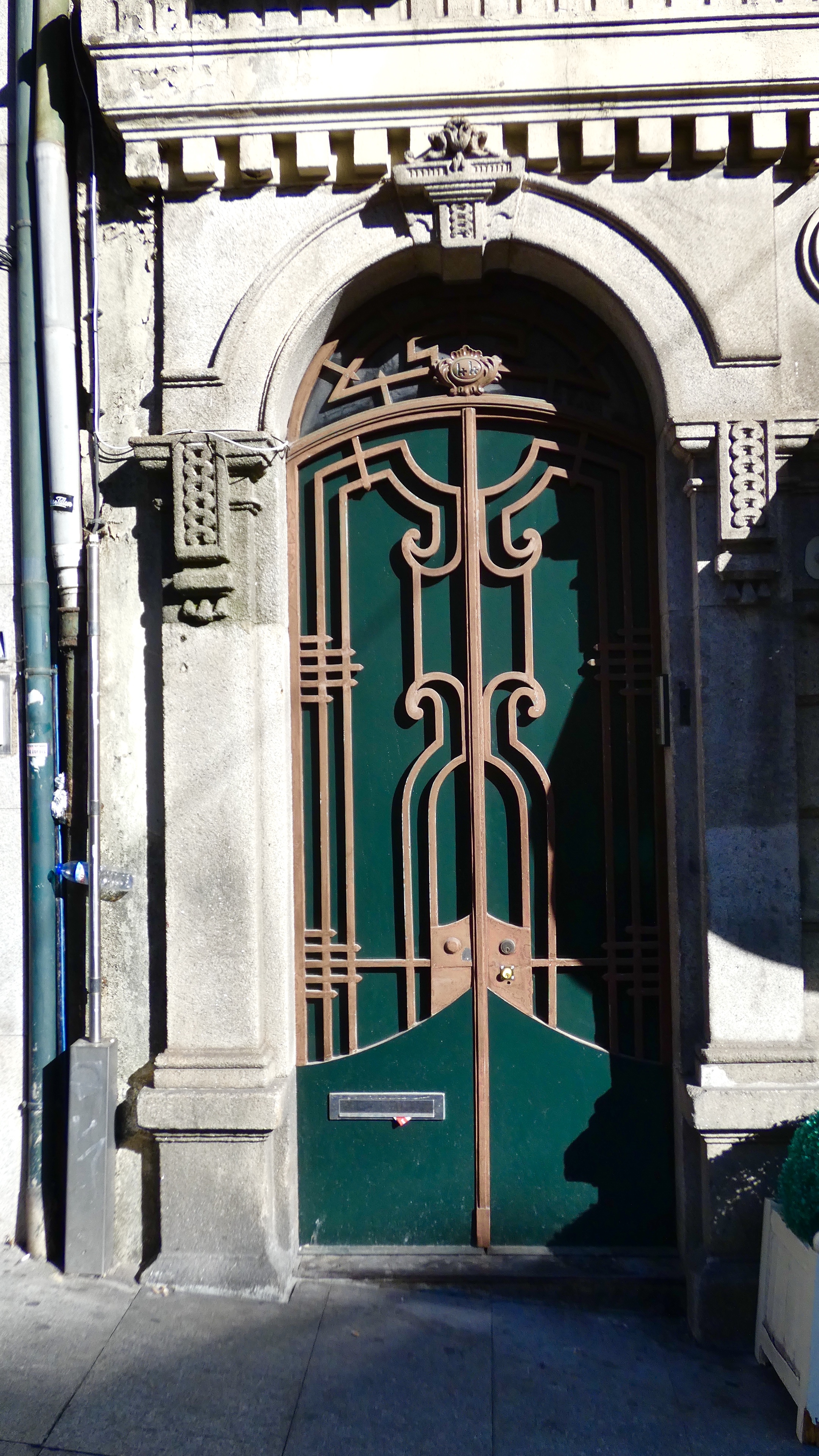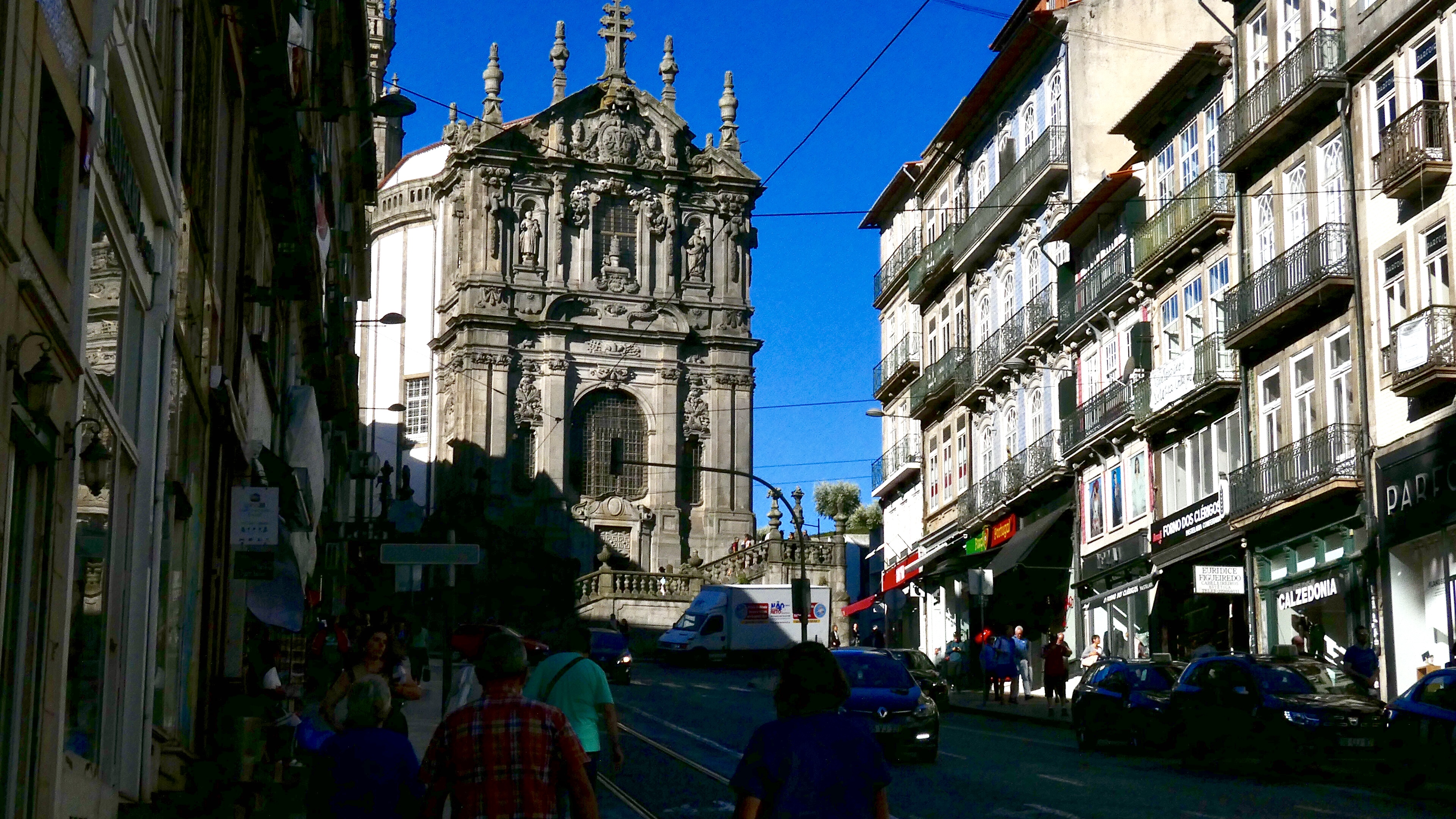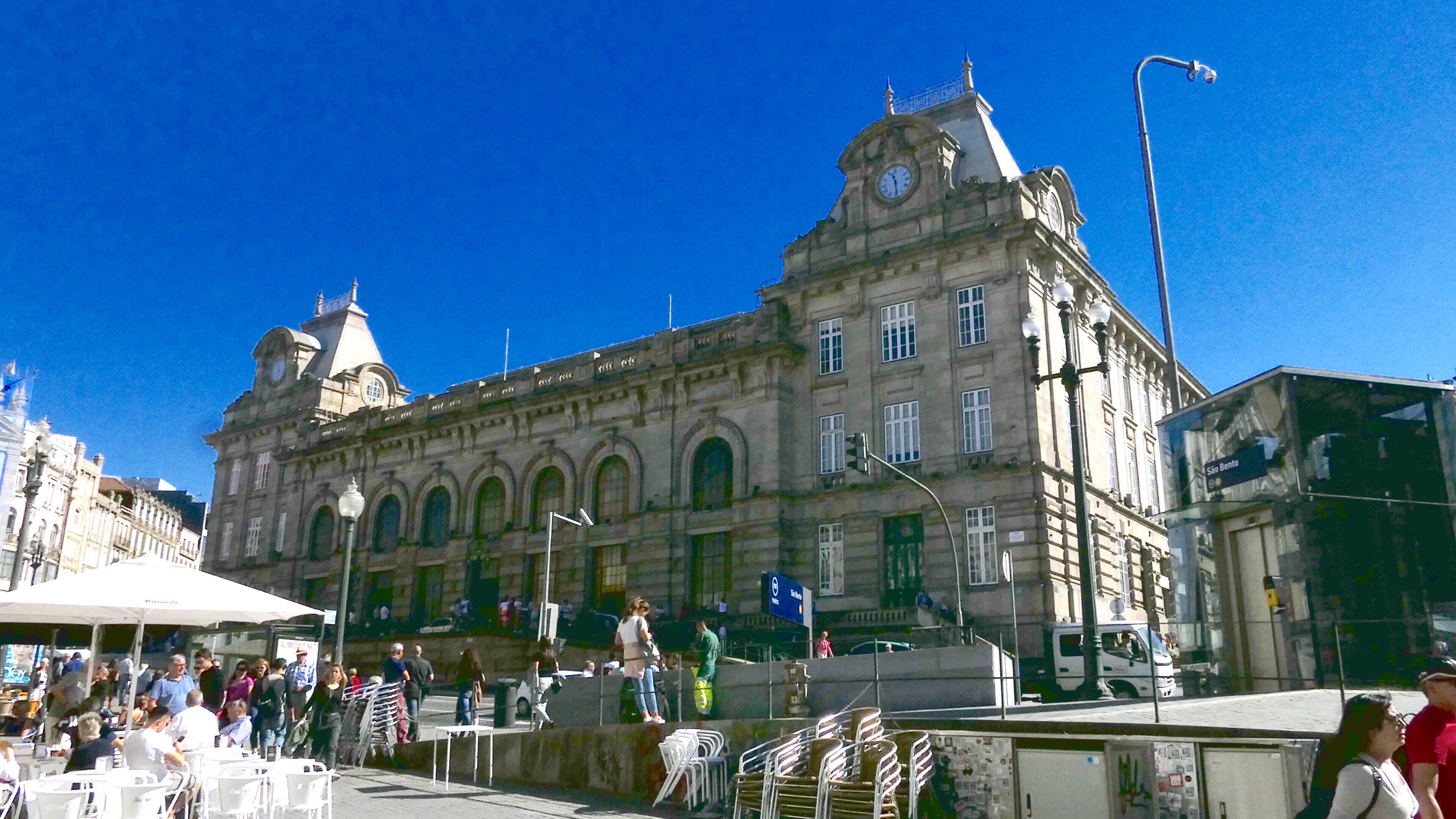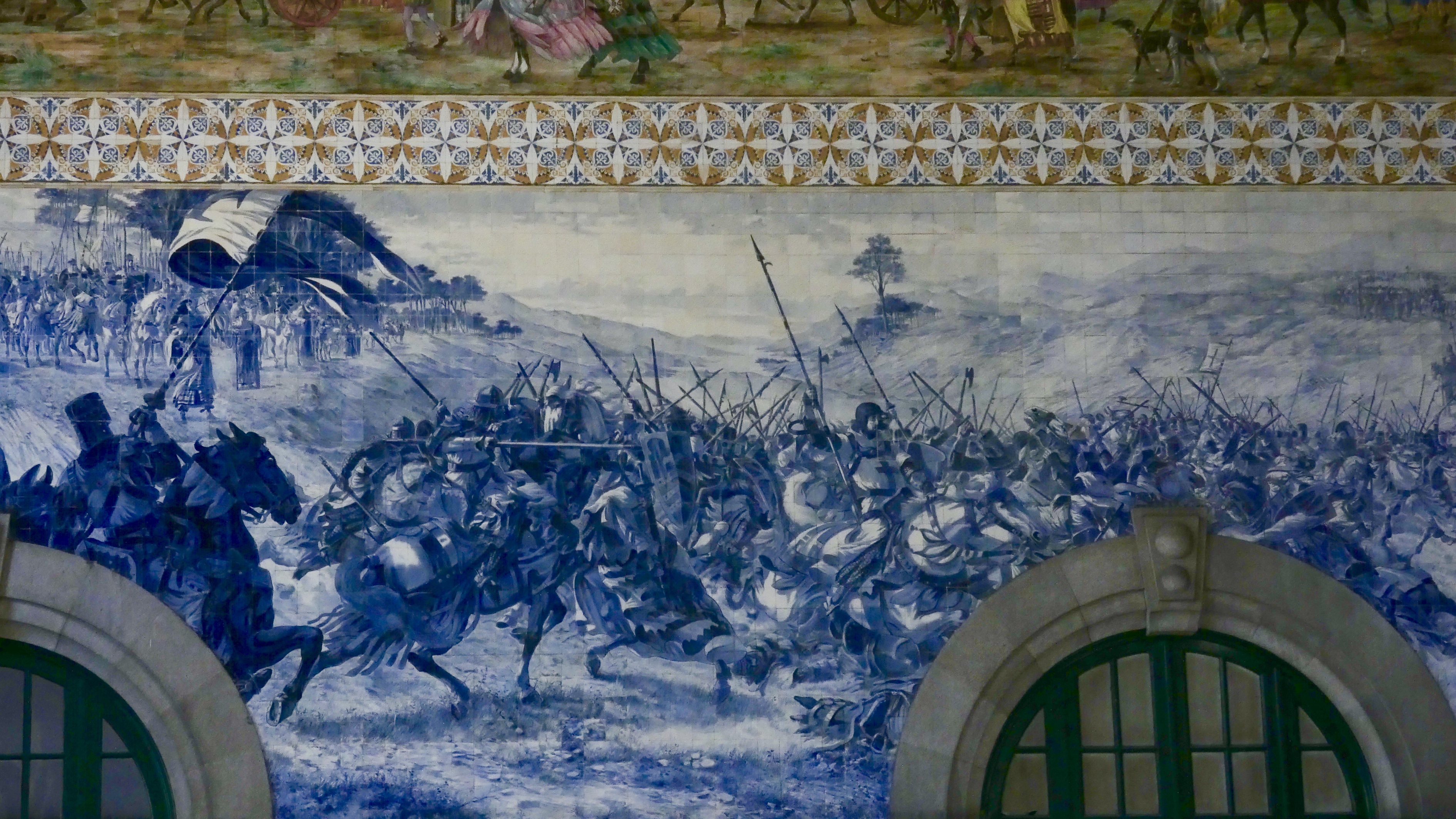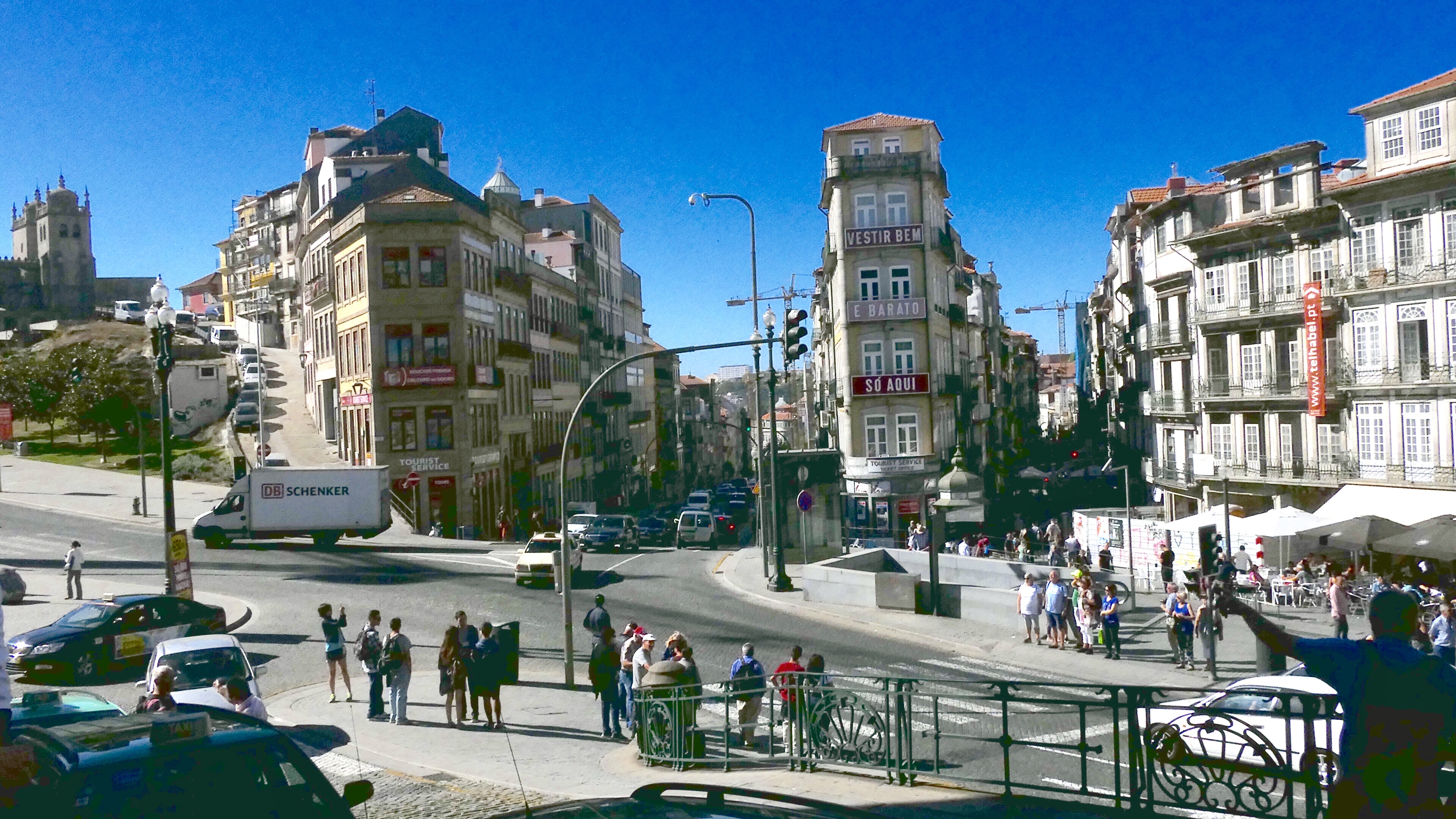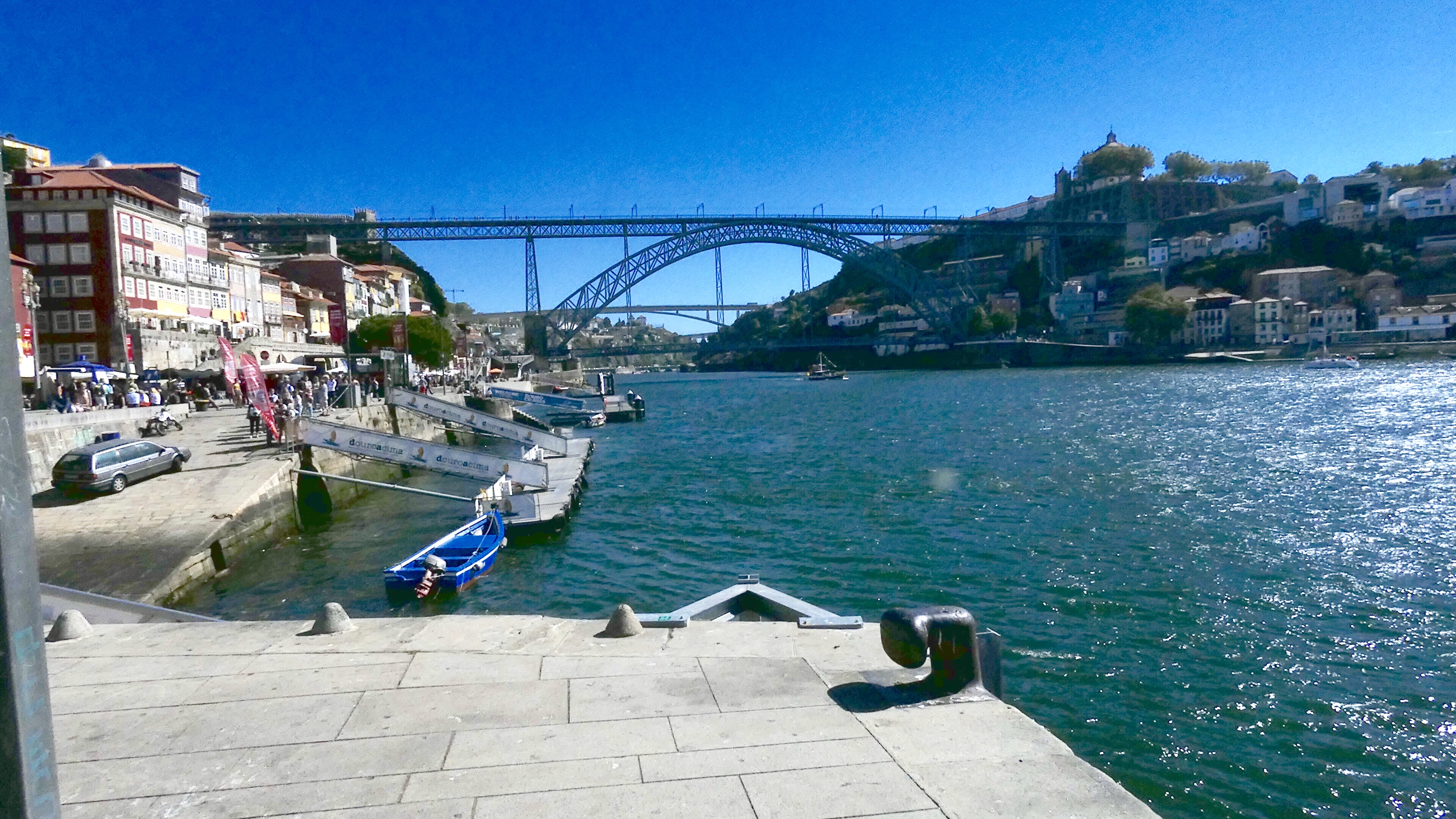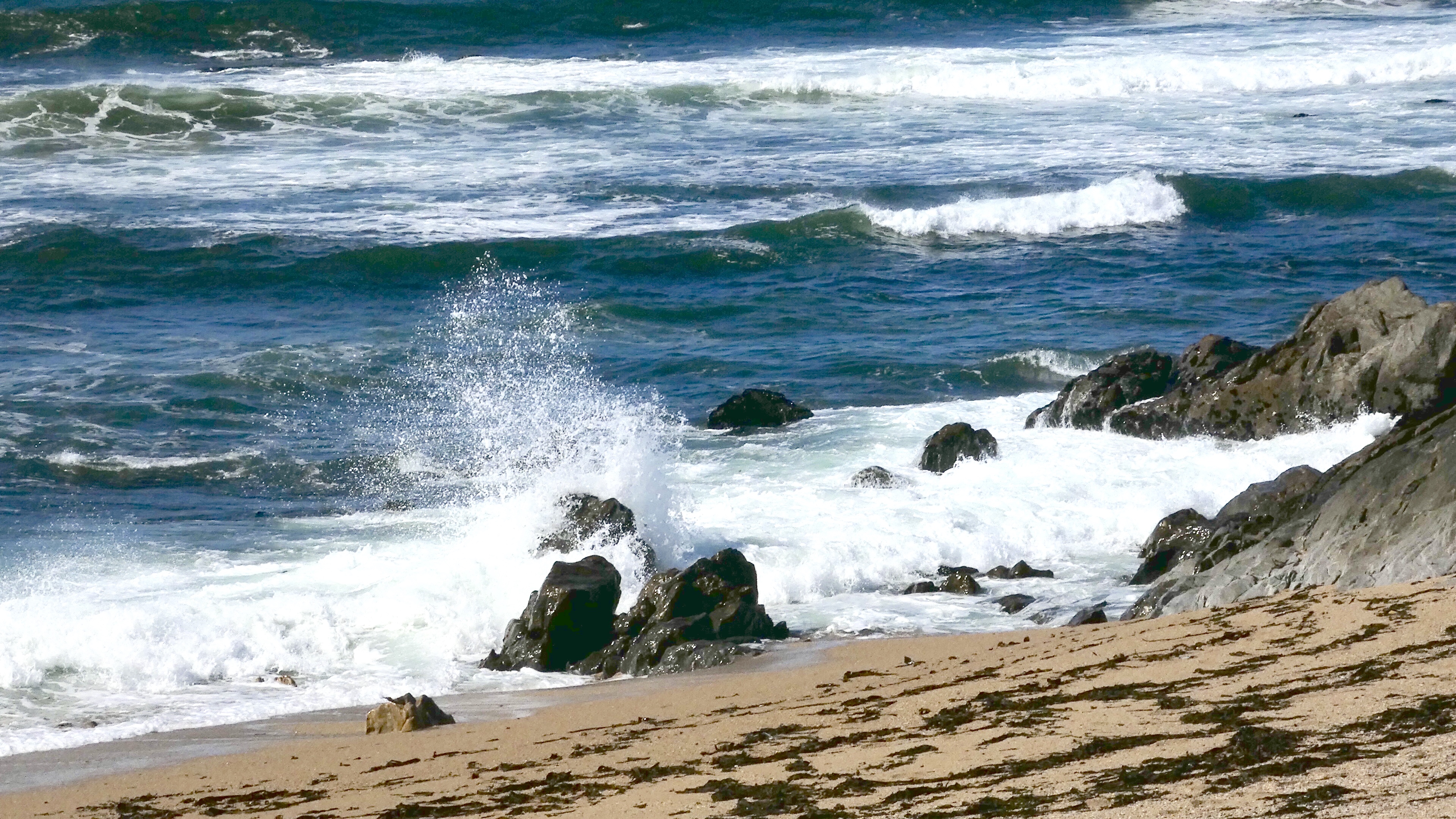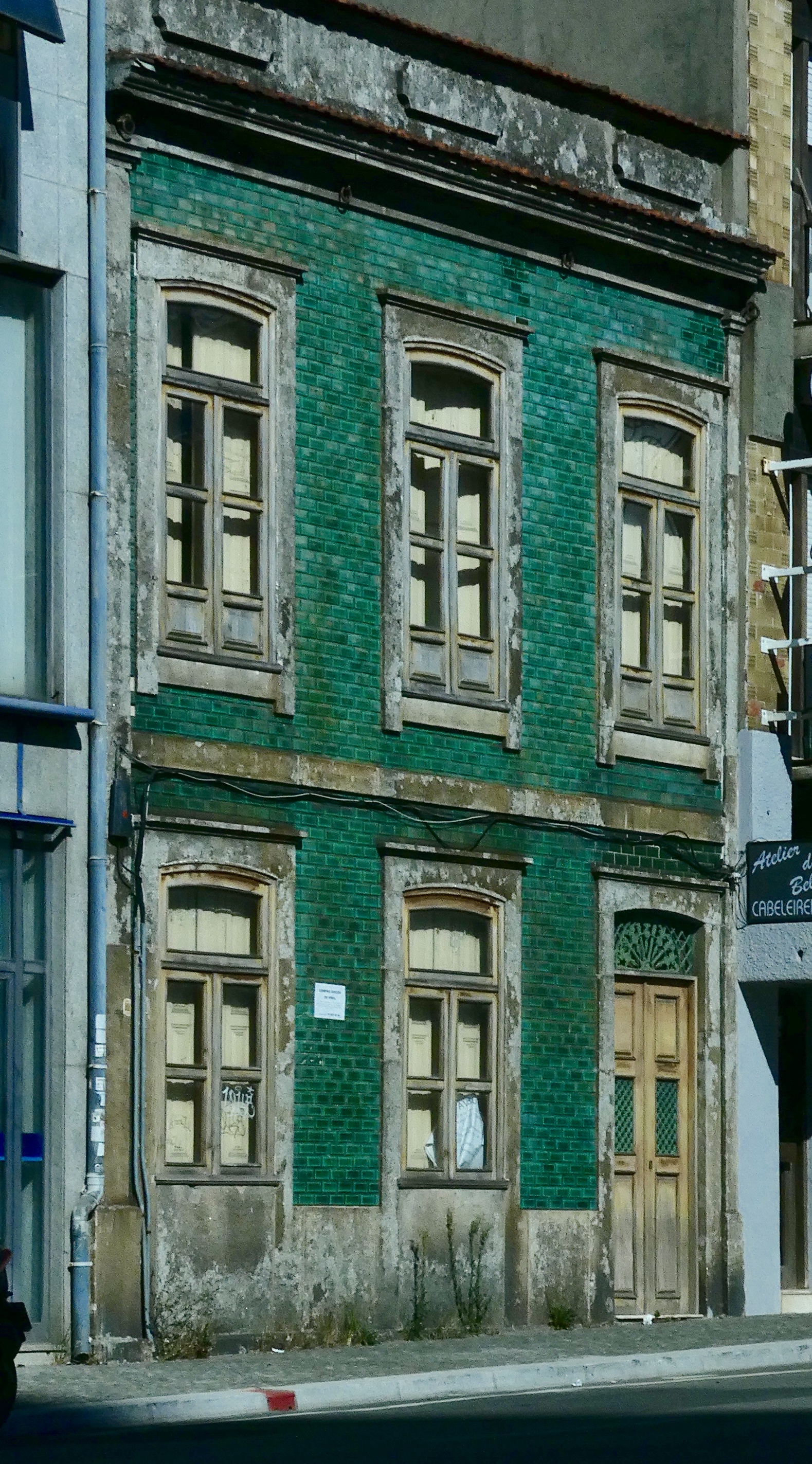The plan was to spend the morning walking from our apartment through the old town and city center on our way down to the Ribeira, the touristy but very beautiful northern bank of the Rio Douro. From there, we’d catch a trolley out to the Foz do Douro, the point at which the mouth of the Douro meets the Atlantic Ocean. We would find a spot to eat, find a bus back to the Museu Serralves, and then find our way back to our apartment for a little rest before venturing out again.
All that happened, and it was glorious, but what we didn’t count on was happening upon the Porto Guitarra, a small, unassuming shop just a few doors down from the Livraria Lello bookstore, JK Rowling’s inspiration for the Hogwarts’ library. Photos are not allowed in the bookstore, and it’s absurdly crowded, but it’s worth googling. The word that comes to mind is “sumptuous,” but that really doesn’t do it justice. (Update: Photography is allowed. Sometimes. See this post.)
But back to Porto Guitarra. The owner and luthier, Tico Rodrigues, is known far and wide for his shop’s exceptional collection of traditional Portuguese and South American stringed instruments—classical guitars, mandolins, and ukuleles, and the Guitarra Portuguese, the traditional guitar of Portugal and integral to the Fado music of the land. His instruments are made by local luthiers of solid woods (no laminates) and exceptional craftsmanship. I was just going to peek in. Really.
But I wanted to try a Guitarra Portuguese, and I was instantly hooked. Very unique tuning, tone, and playing style that is unlike any other stringed instrument I’ve encountered. To make two hour-long story short, this one is getting shipped home to me, thanks to the insistence of my lovely, patient, and very understanding wife Mary. I’m not sure what I’ve ever done to deserve this.
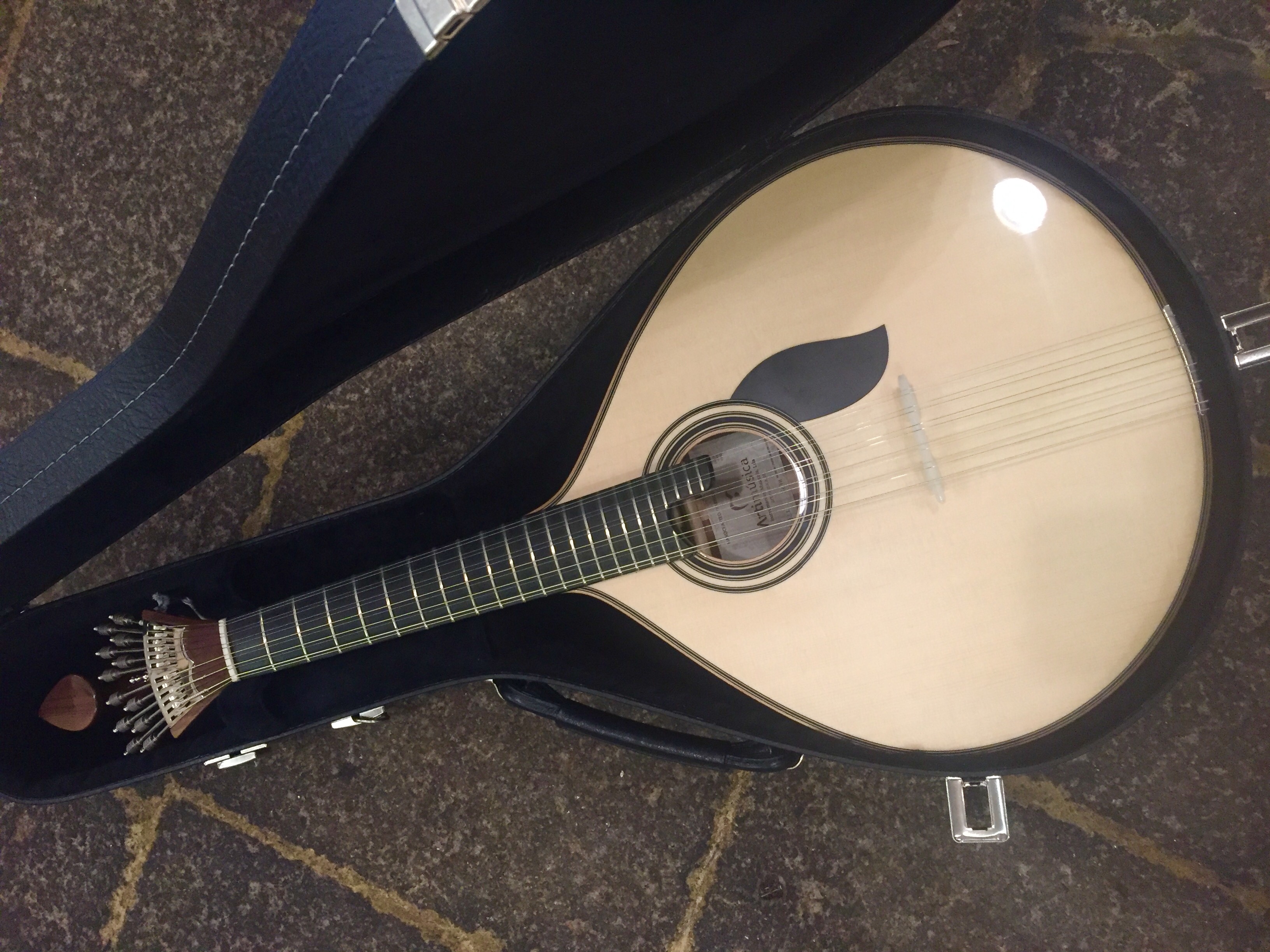
If you visit the Porto Guitarra website, click on his Produccts link to see more traditional Portuguese instruments, and be sure to click “See more of our product catalog” to see the other Guitarras Portugueses.
So anyway, Porto. Our first full day here was a joy. Founded in the 13th century but with settlements going back to pre-Roman times, Porto is an intriguing mix of old and new, of good times and bad, and modernity and traditionalism. Most of the old buildings have balconies and courtyards, grand portals for doors, and tiled facades of local manufacture. Many are also abandoned and decaying, although there appears to be a building boom of sorts going on here, with many older buildings for sale and many others being restored. Throughout the city are remnants of Roman walls, centuries-old fortifications, and cathedrals and palaces, often with new additions or with entirely new construction built on top of the old. Narrow, winding (and often steep) cobblestone streets are often squeezed to the limit by cars, delivery trucks, and large buses. It all works somehow. Porto feels comfortable and liveable. (Speaking of living, I have never seen as many apartments in one place as I have seen in Porto.)
Here are a few images. Another full day tomorrow.
